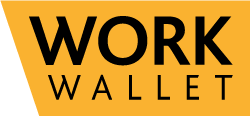Operating a Mandatory Occurrence Reporting System: What You Need to Know
15 July 2025

At Work Wallet, we understand the importance of operating a mandatory occurrence reporting (MOR) system in managing building safety and regulatory compliance. Whether you're a principal contractor, designer, or Principal Accountable Person (PAP), the legal obligations are clear, and our health and safety management platform helps you meet them efficiently.
Who Must Operate a Mandatory Occurrence Reporting System?
Principal Designers and Principal Contractors working on higher-risk buildings must have an MOR system in place from the outset of any qualifying project, including:
- The construction of a new, higher-risk building
- Work on an existing higher-risk building (excluding exempt or emergency works)
- Alterations that result in a building becoming, or ceasing to be, higher-risk
A higher-risk building is defined as a structure that is at least 18 metres high or has seven or more storeys, contains two or more residential units, or is a hospital or care home.
Using Work Wallet’s incident reporting and safety management tools, you can build a reliable and auditable system to meet these duties with ease.
Responsibilities of Principal Accountable Persons (PAPs)
If you're responsible for a high-rise residential building, you must:
- Register the building with the Building Safety Regulator (BSR)
- Establish and operate a single MOR system for that building
- Regularly review the system to ensure it remains effective
When requested by the BSR, you must also submit evidence that your MOR system:
- Captures reports from residents, APs, and building users
- Allows for assessment of reported incidents
- Notifies the BSR of safety occurrences promptly
- Submits a full report within 10 days of identification
Work Wallet makes it simple to log, track, and escalate incidents across teams, ensuring you stay compliant and responsive.
What Should Your Reporting System Capture?
Your MOR system must support the prompt reporting of building safety incidents that have caused, or could cause, the death or serious injury of a significant number of people, typically involving:
- Structural failure
- Spread of fire or smoke
In the context of design, this includes risks to structural integrity or fire safety that could lead to serious consequences if the building were to be constructed.
With Work Wallet, all stakeholders, including contractors, site visitors, residents, and APs, can easily report concerns through mobile apps, web portals, or QR-accessed forms, reducing friction and improving responsiveness.
Operating the MOR System Throughout the Project Lifecycle
For construction and design phases, principal designers and contractors must:
- Set up and maintain their MOR system before work begins
- Enable easy reporting from all on-site personnel and visitors
- Regularly review submissions and take action where needed
For occupied buildings, PAPs must:
- Make the system accessible to residents and building users
- Clearly explain how and what to report
- Support reports via multiple methods (e.g. email, phone, in-person, or through Work Wallet’s digital tools)
- Publish a clear MOR policy and update it regularly
Displaying clear instructions and offering flexible reporting formats (including images, video, and different languages or accessibility formats) is not just best practice; it’s key to compliance and engagement.
Submitting Reports to the BSR
If an incident meets the mandatory occurrence criteria, you must:
- Submit a mandatory occurrence notice as soon as possible
- Submit a formal report within 10 days of the safety occurrence being identified
Our platform can help automate this workflow, ensuring reports are tracked, escalated, and documented, saving time and reducing risk.
Operating Mandatory Occurrence Reporting System
A well-run MOR system also depends on clear communication. You must ensure:
- Everyone involved knows how to report
- You set expectations for when and how you'll respond
- All data is handled in line with GDPR
With Work Wallet, you can send automated updates, acknowledge submissions, and provide transparency; all while maintaining secure, compliant record-keeping.
Involving Residents and Users
In occupied buildings, PAPs should actively involve residents in the design and ongoing development of the MOR system. This includes:
- Providing reporting tools that are easy to use
- Offering alternative formats or languages if needed
- Allowing representatives to submit reports on a resident’s behalf
Engaging residents builds trust and ensures you’re meeting your obligations under equality law. Our digital-first tools are designed to be inclusive and user-friendly, helping you achieve just that.
Why Choose Work Wallet For Operating A Mandatory Occurrence Reporting System?
From initial project planning to long-term building management, Work Wallet supports all parties in operating a mandatory occurrence reporting system that’s compliant, effective, and easy to use.
Our tools allow for:
- Customisable reporting workflows
- Mobile-friendly incident submissions
- GDPR-compliant data handling
- Built-in audit trails for accountability
Let us help you meet your responsibilities and protect lives through more innovative safety management.
Need help implementing a mandatory occurrence reporting system?
Contact Work Wallet today to book a demo and see how we can support your compliance journey.
Share post
More Posts
What You Need to Know About Mandatory Occurrence Reporting Under the Building Safety Act
Jun 2025
Mandatory Occurrence Reporting (MOR) is one of the most critical responsibilities introduced by the Building Safety Act 2022. For construction...
Smarter Safety, Less Risk - EHS Software
Jun 2025
Reduce workplace incidents, drive employee engagement, and improve visibility across your organisation with Work Wallet's powerful EHS software platform. Book...



